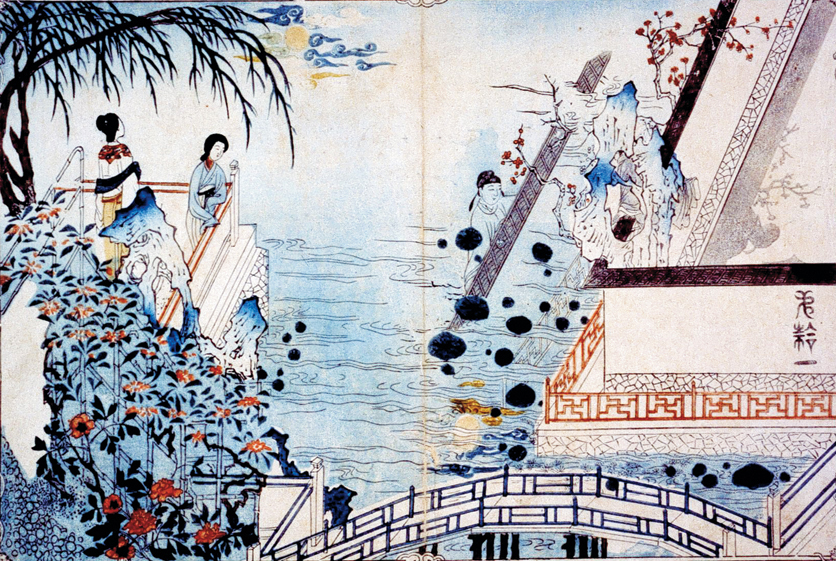A History of World Societies:
Printed Page 624
A History of World Societies Value
Edition: Printed Page 628
Everyday Life in Ming China
For civil servants and almost everyone else, everyday life in Ming China followed patterns established in earlier periods. The family remained central to most people’s lives, and almost everyone married. Beyond the family, people’s lives were shaped by the type of work they did and where they lived.
Large towns and cities proliferated in Ming times and became islands of sophistication in the vast sea of rural villages. In these urban areas small businesses manufactured textiles, paper, and luxury goods such as silks and porcelains. The southeast became a center for the production of cotton and silks; other areas specialized in the grain and salt trades and in silver. Merchants could make fortunes moving these goods across the country.
Printing was invented in Tang times (618–
The full-
The Chinese found recreation and relaxation in many ways besides reading. The affluent indulged in an alcoholic drink made from fermented and distilled rice, and once tobacco was introduced from the Americas, both men and women took up pipes. Plays were also very popular. The Jesuit missionary Matteo Ricci, who lived in China from 1583 to 1610, described resident troupes in large cities and traveling troupes that “journey everywhere throughout the length and breadth of the country” putting on plays. The leaders of the troupes would purchase young children and train them to sing and perform. Ricci thought too many people were addicted to these performances:
These groups of actors are employed at all imposing banquets, and when they are called they come prepared to enact any of the ordinary plays. The host at the banquet is usually presented with a volume of plays and he selects the one or several he may like. The guests, between eating and drinking, follow the plays with so much satisfaction that the banquet at times may last for ten hours.1
People not only enjoyed play performances but also avidly read the play scripts. The love stories and social satires of Tang Xianzu, the greatest of the Ming playwrights, were very popular. One of his plays tells the story of a young man who falls asleep while his meal is cooking. In his dream he sees his whole life: he comes in first in the civil service examinations, rises to high office, is unfairly slandered and condemned to death, and then is cleared and promoted. At the point of death, he wakes up, sees that his dinner is nearly ready, and realizes that life passes as quickly as a dream.

More than bread in Europe, rice supplied most of the calories of the population in central and south China. (In north China, wheat, made into steamed or baked bread or into noodles, served as the dietary staple.) In the south, terracing and irrigation of mountain slopes, introduced in the eleventh century, had increased rice harvests. Other innovations also brought good results. Farmers began to stock the rice paddies with fish, which continuously fertilized the rice fields, destroyed malaria-
The Ming rulers promoted the repopulation and colonization of war-
Increased food production led to steady population growth and the multiplication of markets, towns, and small cities. Larger towns had permanent shops; smaller towns had periodic markets — some every five days, some every ten days, some only once a month. They sold essential goods — such as pins, matches, oil for lamps, candles, paper, incense, and tobacco — to country people from the surrounding hamlets. Markets usually included moneylenders, pawnbrokers, a tearoom, and sometimes a wine shop where tea and rice wine were sold and entertainers performed. Tradesmen carrying their wares on their backs and craftsmen — carpenters, barbers, joiners, locksmiths — moved constantly from market to market. Itinerant salesmen depended on the city market for their wares.